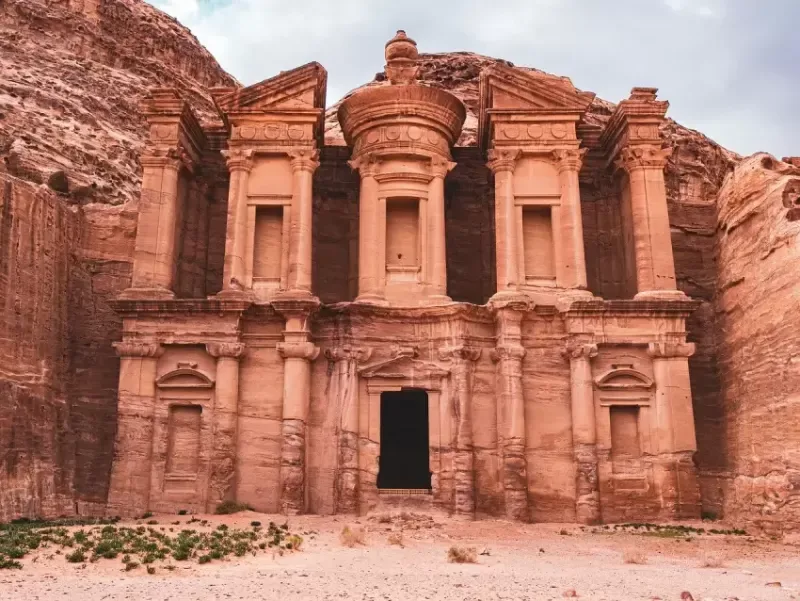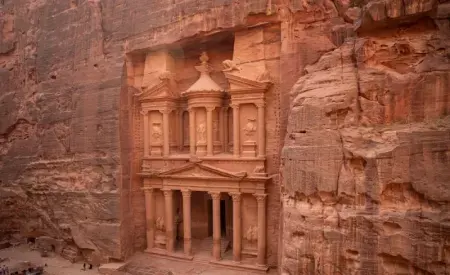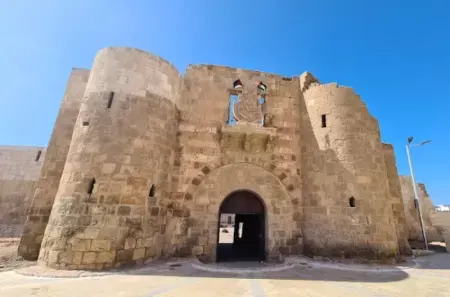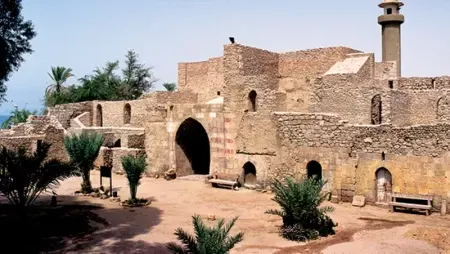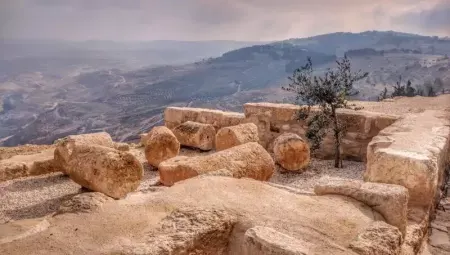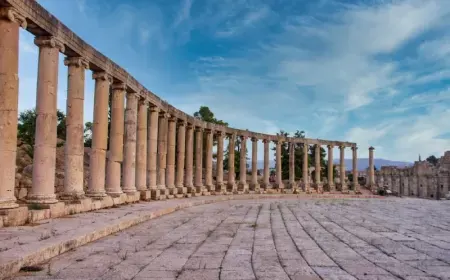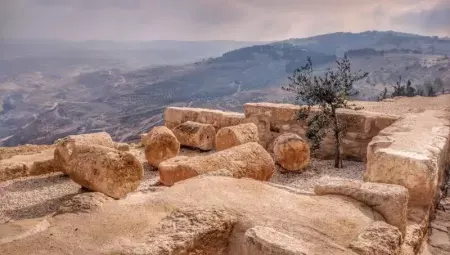What is special about Siwa Oasis?
best place to visit is siwa oasis becuse siwa oasis famous for stands out in a number of ways:
Ancient Ruins and Rich Heritage
Temple of the Oracle of Amun: Siwa Oasis is renowned for the Temple of the Oracle of Amun that Alexander the Great went to in order to receive the oracle. It's an ancient ruin that tells a lot about the religio-cultural significance of Siwa in ancient Egyptian history.
Ancient Tombs and Ruins: The oasis is scattered with ancient ruins, ranging from tombs and forts to the remains of old buildings, that provide a great insight into Egypt's history.
Special Culture and People
Berber Influence: Siwa has its own Berber culture, language, traditions, and customs that have been preserved relatively intact through the centuries. The Siwi people are Siwi, and they have a very tight-knit society with strong connections to their roots.
Traditional Architecture: Siwa town is renowned for its mud-brick buildings and the ancient Shali Fortress, a testament to the unique architecture appropriate for desert dwelling.
Oasis Landscape and Natural Beauty
Salt Lakes and Springs: Siwa is renowned for its many salt lakes and natural springs that are not only picturesque but also medicinal. The Cleopatra Spring is a popular destination where one can take a rejuvenating bath.
Great Sand Sea: The oasis lies close to the Great Sand Sea, a huge dune desert that provides scope for adventure sports such as sandboarding and 4x4 safaris.
Isolation and Serenity
Remote Location: Siwa is a highly remote oasis in Egypt, and that is where its beauty lies. Tourists visit Siwa so that they can be distant from the cities and enjoy a peaceful retreat into the wilderness and also to soak in the tranquility of the desert.
Star-Gazing: Siwa, with its clean and broad open skies, is one of the world's top places to stargaze, giving one an otherworldly glimpse of the stars.
Unique Products
Siwa Olive Oil: The oasis is even a producer of high-quality olives and olive oil, both local produce and a highly sought commodity of the nation.
Dates and Local Crafts: Siwa is even famous for date cultivation and local handicrafts made by locals.
Cultural Festivals
Siwa Festival: The oasis also holds cultural festivals and events all year round, celebrating Siwa's history in the form of music, dance, and local culture.
Siwa Oasis is unusual not just for its natural appeal but for its historical, cultural, and religious significance, an odd yet fascinating spectacle in Egypt.
Top 10 Attractions in Siwa oasis
Top destinations in egypt Siwa Oasis and its one of the best egypt desert adventure , discover siwa oasis is a treasure of Egypt that provides a dose of history, culture, and stunning natural beauty. The top 10 siwa oasis attractions , things you do in siwa when you are at Siwa are as follows:
- Temple of the Oracle of Amun
Significance: It is one of the most famous places in Siwa. Alexander the Great visited here in 332 BCE to consult the oracle, and since then, it has been a very significant place in history. The temple remains a reminder of Siwa's religious importance during ancient Egypt.
- Shali Fortress
Description: A 12th-century ancient mud-brick fort, Shali provides sweeping vistas of the desert, oasis, and surrounding landscape.
It is the ideal spot to snap photos or admire ancient Siwan architecture.
- Cleopatra's Bath
Significance: A palm grove dotted with greenery around a natural spring, Cleopatra's Bath is a peaceful place to swim in the cool, crystal-clear water. It is said that Cleopatra herself bathed here, and the location has become a favorite destination for tourists seeking to unwind and history enthusiasts as well.
- Mountain of the Dead (Gebel al-Mawta)
Description: This is a collection of old tombs excavated into the mountain and belonging to the 26th Dynasty (c. 600 BCE). It provides us with fascinating facts on Siwi funeral rites, with some tombs being adorned with ancient Egyptian designs.
- Siwa Salt Lakes
Description: The salt lakes are stunning, with their blue hue and the desolate desert surrounding them. The lakes are otherworldly, and tourists are able to swim in the water said to heal.
- Siwa Museum
Description: In the center of Siwa, the Siwa Museum is a humble but informative building that offers a complete study of Siwi history, culture, and tradition. The museum contains objects, including tools, ornaments, and clothing, that outline the unique heritage of the oasis.
- Gebel al-Taghaghien (The Mountain of the Lovers)
Description: It is a site of very old rock formation and caves and paintings and inscriptions that go back thousands of years. It also provides grand views of the desert and the oasis around and thus is an excellent trekking and photo spot.
- Fayoum Oasis
Description: Aside from Siwa, the Fayoum Oasis boasts even more historical landmarks, picturesque lakes, and deserts. The oasis is home to the renowned Lake Qarun, a perfect spot for bird watching and observation of Egypt's wildlife.
- Ain Sitra Spring
Description: Famous for its cool and sweet water, Ain Sitra is among Siwa's natural spring delights. It lies on the periphery of the oasis, covered with a palm tree canopy, and gives visitors a peaceful and tranquil place to imbibe nature.
- Siwa's Traditional Handicrafts and Market
Description: Siwa local market is a place that offers diversified kinds of handmade products, including pottery, basketry, and traditional dress. Going to the market is among the best ways of feeling the culture and carrying home something unique.
Siwa Oasis Travel Guide
on of Africa adventure travel is Siwa Oasis in Egypt's Western Desert, bordering Libya, is a serene, picturesque destination surrounded by ancient ruins, stunning vistas, and rich cultural heritage. Renowned for its historical significance as an ancient Egyptian spiritual hub, Siwa offers a once-in-a-lifetime experience for history buffs, nature lovers, and those seeking relaxation. Continue reading to plan your visit to this beautiful oasis.
- Travel to Siwa Oasis
Siwa Oasis is a bit off the tourist trail, so arriving there does require some effort:
By Car: The easiest way to travel to Siwa is by car. It is approximately a 7-8 hour drive from Cairo (approximately 750 kilometers). The road runs across the Western Desert, so be prepared for the long journey through stunning but desolate landscapes.
By Bus: The public buses that serve Cairo and Siwa leave from the Turgoman bus station. The trip takes approximately 9-10 hours.
By Private Tour: The majority of travelers prefer to go to Siwa on a tour package that also covers transport. That makes visiting the oasis more convenient, and stops at other nearby attractions may be made along the route.
- Best Time to Visit
best time to visit siwa oasis in Spring and Autumn (March to May & September to November): These seasons are optimal as the weather is pleasant and warm, making it perfect for outdoor visits and enjoying the desert views.
Summer (June to August): Siwa experiences very hot weather, typically over 40°C (104°F), so it is not as ideal for outdoor excursions.
Winter (December to February): Although winter is pleasant weather, it might be chilly in the evenings, so wear warm clothing for the night.
- Siwa Oasis Top Attractions
Temple of the Oracle of Amun
History buffs must visit this temple, which has been the place where Alexander the Great famously met the Oracle. The ruins provide an insight into the spiritual significance of Siwa during ancient times.
Shali Fortress
The 12th-century mud-brick fortress of Shali, the quintessence of Siwa's ancient traditions, perches atop a hike-able mountain you can climb for panoramic views across the desert and oasis.
Cleopatra's Bath
A natural spring laid out with palm trees, celebrated for the sparkling clear water, where, they say, Cleopatra bathed, and is now greatly enjoyed for both relaxation and as an historic view to see.
Mountain of the Dead (Gebel al-Mawta)
This place contains numerous ancient tombs chiseled out of rock, giving a fascinating insight into the burial practices of Siwa's early inhabitants.
Siwa Salt Lakes
The lakes are splendidly colored, and the water is reported to have therapeutic effects. It is an ideal place for a peaceful swim.
Gebel al-Taghaghien (Mountain of the Lovers)
A peaceful place for walking, with old inscriptions on rock and fine scenery overlooking the desert and oasis.
Siwa Museum
Learn the oasis history and culture at this little but informative museum, which displays artifacts, local handicrafts, and traditional dress.
Ain Sitra Spring
Renowned for its fresh, cool water, this spring is a popular choice for swimming and relaxing in the oasis.
- Activities and Experiences
Desert Safari
A visit to Siwa would not be the same without exploring the surrounding desert. 4x4 safaris and camel treks take you into the Great Sand Sea, where you enjoy breathtaking views and try sandboarding on the massive dunes.
Stargazing
Siwa's starry night sky and remoteness make it an ideal destination for stargazing. Away from town lights, you can enjoy a clear view of the stars in the desert sky.
Traditional Crafts and Markets
Visit the Siwa local markets to purchase locally produced goods such as pottery, wickerwork baskets, and traditional Siwi clothing. Siwa craft is a reflection of the unique culture of the Berber residents of the oasis.
Relax at Cleopatra's Spring
Take a swim in the pure waters of Cleopatra's Bath or other springs nearby for a relaxing and invigorating experience.
- Accommodation Options
Siwa Oasis has a variety of accommodations available, from budget guesthouses to eco-lodges of higher luxury:
Shali Lodge: A quaint eco-lodge with a mud-brick aesthetic, blending local ambiance and modern amenities. It's ideal for travelers who want to really experience Siwa's unusual atmosphere.
Siwa Oasis Hotel: In the heart of Siwa, this hotel offers modern facilities in a cozy, clean setting, great for guests.
Adrère Amellal Eco-Lodge: Luxury and eco-friendly lodging built from natural materials according to traditional Siwi architecture. Located on the periphery of the desert, it offers a true desert experience with comfort and privacy.
Cleopatra Resort: For extra luxury, this resort offers spacious rooms and a beautiful view of the surrounding desert landscape.
- Food and Dining
Siwa Oasis offers a selection of traditional and local foods that reflect both the Egyptian and Berber cultural heritage:
Siwa's Dates: Siwa's dates are famous and make up a major portion of the local diet. They are bought fresh in the market or eaten as desserts.
Traditional Food: Try fatta (meat, bread, and rice food) or koshari (lentil food served with rice and pasta). Locally caught fish from the lakes is also found everywhere in Siwa.
Bedouin food: Enjoy a traditional Bedouin meal, typically made of grilled meat, flatbread, and raw vegetables.
- Practical Information
Money: The money is Egyptian Pound (EGP). There are not many ATMs in Siwa, so it would be best to bring cash.
Language: The official language is Arabic, but Berber is also spoken by many locals. English is spoken in tourist areas, although it's always a good idea to pick up some Arabic words.
Dress Code: Siwa is actually very relaxed, but you still need to dress modestly, especially in more conservative settings or when visiting villages.
- Safety and Health
Travel Insurance: Make sure you have complete travel insurance covering desert travel and outdoor activities.
Sun Protection: The desert sun can be powerful, so bring sunscreen, a hat, and sunglasses. Stay hydrated with lots of water.
Health Precautions: Siwa's tap water is generally safe, but tourists are best off with bottled water. Be cautious with street food if your stomach is sensitive.
What should I pack for Siwa Oasis?
As preparation for Siwa Oasis tour , travel wisely to allow comfort in the desert landscape, relaxation in the natural springs, and absorption of the dense history.
The following is a checklist to prepare you for your tour:
- Clothing
Light, Breathable Clothing: It can become extremely hot in the desert day, so pack light, airy clothing in natural fibers like cotton or linen. Loose-fitting clothes will provide comfort and cool you in the heat.
Layered Clothing: While the days are hot, the evenings and nights might become cool, especially in the winter months. Pack a light jacket or sweater for chilly nights.
Modest Clothing: Siwa is a conservative area, so it's thoughtful to dress modestly, especially in the local villages and when visiting cultural or religious sites.
Swimwear: For swimming in natural springs like Cleopatra's Bath, wear a swimsuit. Be respectful of local customs, though, and choose modest swimwear (e.g., one-piece or modest bikini).
Hats and Scarves: A large-brimmed hat is vital to shield your head and face from the desert sun. A scarf or a shawl could also be helpful to cover shoulders or guard against the wind.
Comfortable Shoes: Pack sturdy, comfortable walking shoes for desert touring and hiking. Closed-toe shoes or sandals are most suitable for uneven surface walking.
Flip-flops or water shoes: To lounge or swim at the springs.
- Sun Protection
Sunscreen: Protect your skin from the desert sun by bringing a high-SPF sunscreen (SPF 30 and higher). The desert sun in Siwa is very brutal, so apply frequently.
Sunglasses: Protect your eyes from the sharp cut of the desert sun with quality sunglasses that block UV.
Lip Balm with SPF: The lips parch and split under the desert sun, so add lip balm with sunscreen.
- Health and Wellness Basics
Water Bottle: It's essential to be hydrated in the desert. Add a refillable water bottle to carry fresh water along, especially on excursions.
Medicines and First Aid Kit: If you have any prescribed medications, do remember to carry them with you. A basic first aid kit of bandages, antiseptic, pain killers, etc. is also worth carrying.
Insect Repellent: Since Siwa itself is not invaded by insects, you will nevertheless encounter mosquitoes, etc. Use a good quality insect repellent to keep them at bay.
Hand Sanitizer: For cleanliness if you are traveling far from the more populated cities.
- Technology and Documents
Camera/Smartphone: You will want to capture the lovely views, the ancient ruins, and the photo opportunities of your trip, so don't forget your camera or smartphone. Pack a portable charger as well if you will be gone for hours at a time.
Chargers and Adapters: Egypt employs the European plug (Type C or F) of 220V power, so bring the proper adapter and charger for your devices.
Travel Documents: Bring your passport, visa (if required), travel insurance, hotel booking, and other travel documents.
Local Currency: Though there are ATMs available in Siwa, it's always a good idea to bring sufficient Egyptian pounds (EGP) for small purchases and to help the locals.
- Outdoor and Adventure Gear
Daypack or Small Backpack: A small, insulated backpack in which to carry your water, snacks, camera, and other items you'll want to have at hand as you explore the oasis and desert.
Sunscreen and Lip Protection: To protect your skin and lips from the effects of the desert sun on excursions.
Binoculars: If nature is your passion, you can use binoculars to spot birds and observe the desert landscape around you.
Sandboarding Equipment: If sandboarding is what you would like to try, equipment can be rented in Siwa as well, but first check to ensure it is available.
- Miscellaneous
Snacks: Take some energy bars or snacks with you for long desert drives because food might not be readily available in the locations you will visit.
Notebook and Pen: Journalists and note-takers will enjoy having a small notebook handy when documenting your experience.
Towel: A travel towel comes in handy for visits to natural springs like Cleopatra's Bath or after desert excursions.
Travel Pillow and Eye Mask: Just in case you are going to have long rides, especially if traveling by bus or car from and to Siwa.
- Camera and Camera Equipment
Wide-Angle Lens: Siwa views are expansive and broad, and a wide-angle lens will encounter no problems when photographing desert vistas, lakes, and ruins.
Extra Batteries and Memory Cards: Remote as well will be the chances of having available shops or plug points for your batteries to recharge, so have spare memory cards and fully charged batteries.
